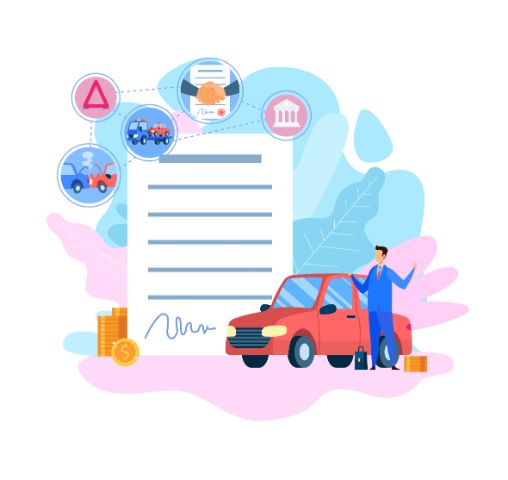Why Your Car Exhaust is Smoking
Why Your Car Exhaust is Smoking

To put it simply, smoke tailpipes indicate that your car is unhealthy and in need of urgent repair. It might be aggravating to discover that smoke is flowing from your automobile. If smoke is escaping from the tailpipe or hood, you can guarantee something is broken. Here is how to interpret tailpipe smoke signals to see if they are the result of a harmless event or the first symptom of a catastrophic mechanical problem. This article will also focus on the importance of engine protection cover.
1. White Smoke Emission
The majority of white smoke emission cases are safe. It is a phase of the ignition cycle that occurs when the car's engine starts. Condensation produces a mist that resembles white smoke. This condensation disappears when the engine heats up, as well as the white smoke is no longer visible.
However, if you notice significant white smoke after the car's engine has warmed up, it might be an indication that trouble is on the way. Interpretation:-
● Coolant Leak
Spotting odourless white smoke mixed with low coolant contents is a warning symptom of a coolant leak. Furthermore, milky-engine oil can be a symptom. This indicates that your car's coolant has entered the combustion cycle and is being burned. If your car's engine is overheated and you discover yourself frequently topping off the coolant, you may have a coolant leakage.
● Fuel Pump Injector Failure
When fuel injectors fail, the quantity of fuel supplied to your car's engine is reduced. This also results in white smoke coming from the pipes. In diesel vehicles, a bad fuel pump injector is a typical occurrence.
● Failure of Engine Control Unit
If the Engine Control Unit of your car fails, the fuel timings may be ticked off. This would result in an ineffective combustion cycle, which might also result in a high volume of white smoke.
2. Heavy Black Smoke
Heavy black smoke indicates that the engine of your car is using too much fuel. As a result, the tailpipe is spewing nothing but carbon. Interpretation:-
● Clogged Intake components:
The first thing to look for is a clogged air filter, as well as other intake car components such as sensors, fuel injectors, as well as the fuel pressure controller.
● Fuel line clog:
If your vehicle's fuel lines are blocked, you may notice black smoke coming from the exhaust. Black smoke is typically the simplest problem to identify and resolve. However, wasting gasoline will have a negative impact on your fuel efficiency. So don't even think of avoiding it.
● Engine Carbonisation:
This occurs when the engine becomes blocked with carbon. This necessitates a comprehensive de-carbonisation of your car's engine.
3. Grey or Blue Smoke
Anything else than black or white smoke is difficult to identify. The smoke might indicate a variety of things. However, if you notice blue-grey smokes coming from your automobile exhaust, you may be positive that your car's engine is in trouble.
● Using Oil:
Blue or grey smoke from the car tailpipe may indicate that the vehicle is consuming oil or has a faulty turbocharger.
● Leak in the Transmission Fluid:
Grey or Blue smoke may also indicate that your auto transmission fluid is being used by the car's engine. In this case, a malfunctioning transmission vacuum modulator is to blame, causing the transmission fluid to be pulled into the car's engine and burnt up.
● PCV Valve Stuck:
Grey smoke might indicate a clogged PCV valve. By recycling toxic pollutants into the combustion process, the PCV system reduces emissions. Nevertheless, if the PCV valve becomes blocked, pressure can build up and cause oil leaks. Luckily, the PCV valves are not costly and can be replaced quickly by a competent technician at a quality workshop.
Importance of Engine Protection Cover:
A car insurance plan is intended to cover any engine damage to the insured vehicle in the event of an unfortunate accident. This implies that your car insurance plan will not reimburse any engine repairing or replacement costs that are not obviously related to a traffic accident. However, by purchasing the Engine Protection Cover add-on plan, you may have any damage or loss to your car's engine insured under the car insurance plan.
Engine Protection Cover protects the policyholders from the expenses coming from any of these reasons:
1. Car Engine Damage
2. Gearbox Damage
3. Water Ingression
4. Lubricant Oil Leakage
5. Hydrostatic Lock Damage
6. The undercarriage of the Car
7. Consumable Costs
8. Labour Costs
Conclusion
Car smoke could indicate that something is amiss with your car’s engine–whether it’s something small and easily fixable, like an oil leak, or something more major, like engine carbonisation. Getting to the root of car exhaust smoking helps ensure that you’re not ignoring an issue that could lead to larger and more costly problems. Maintenance fixes can be a cost-saving way to stay safe on the road. If you are concerned about engine issues, it is advisable to purchase an engine protection coverfor your four-wheeled beauty. It provides complete coverage for your car in exchange for a nominal increase in the insurance premium.
Disclaimer: The above information is for illustrative purpose only. For more details, please refer to policy wordings and prospectus before concluding the sales.
RELATED ARTICLES
How to Properly Dispose of Automotive Fluids and Chemicals?
Renewing your Car Insurance-Get an Engine Protect cover
Protect your car engine with an add-on engine protection cover










 Health Insurance
Health Insurance  Travel Insurance
Travel Insurance  Car Insurance
Car Insurance  Cyber Insurance
Cyber Insurance  Critical Illness Insurance
Critical Illness Insurance
 Pet Insurance
Pet Insurance
 Bike/Two Wheeler Insurance
Bike/Two Wheeler Insurance  Home Insurance
Home Insurance  Third Party Vehicle Ins.
Third Party Vehicle Ins.  Tractor Insurance
Tractor Insurance  Goods Carrying Vehicle Ins.
Goods Carrying Vehicle Ins.  Passenger Carrying Vehicle Ins.
Passenger Carrying Vehicle Ins.  Compulsory Personal Accident Insurance
Compulsory Personal Accident Insurance  Travel Insurance
Travel Insurance  Rural
Rural 











